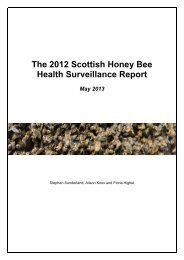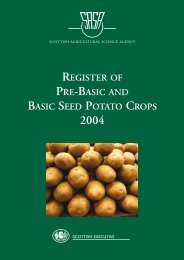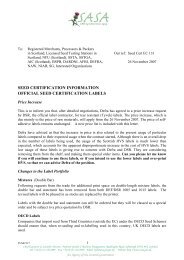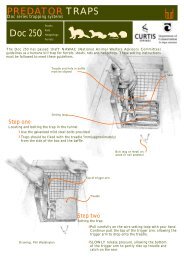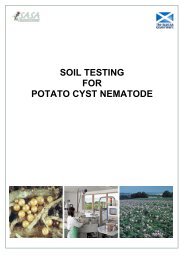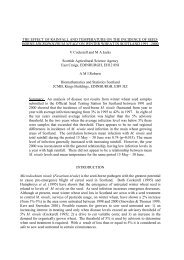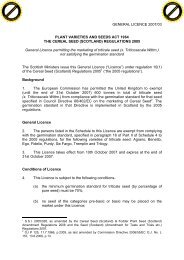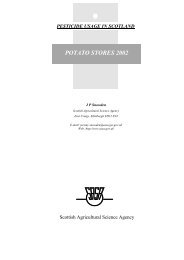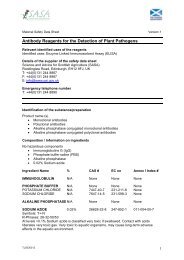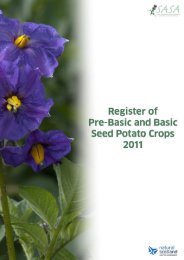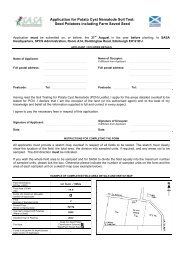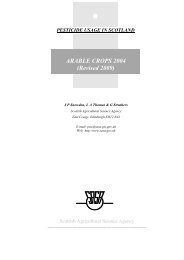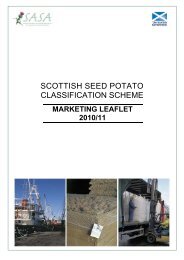Pesticide Poisoning Report 2011 - SASA
Pesticide Poisoning Report 2011 - SASA
Pesticide Poisoning Report 2011 - SASA
You also want an ePaper? Increase the reach of your titles
YUMPU automatically turns print PDFs into web optimized ePapers that Google loves.
INTRODUCTION1. In the United Kingdom the impact of pesticide use on non-target vertebratewildlife and other animals including honey bees, companion animals andlivestock, is assessed before approval is granted by the regulatory body. Inorder to protect animals, restrictions on use may be imposed in the conditions ofapproval made under the Control of <strong>Pesticide</strong>s Regulations (COPR) 1986 (asamended) or the Plant Protection Products Regulations (<strong>2011</strong>), where it isthought that an unacceptable risk would arise.2. The WIIS Scotland is one of four schemes, operating in the United Kingdom,which investigates possible pesticide poisoning of animals. The WIIS Scotlandis operated by <strong>SASA</strong>’s <strong>Pesticide</strong>s & Wildlife Branch on behalf of the ScottishGovernment Agriculture, Food and Rural Communities Directorate (AFRC). Theprocedures for incident investigation are described in Appendix I.3. Incidents confirmed as involving pesticides that were considered to beresponsible for the cause of death or illness of an animal or that contravenerelated legislation are assigned to one of the following categories:Approved use of the product, according to the specified conditions ofuse;Misuse of a product, by careless, accidental or wilful failure to adhere tothe correct practice;Abuse of a pesticide, in the form of deliberate, illegal attempts to poisonanimals;Unspecified use, where the cause could not be assigned to one of theabove categories. Veterinary use, where subsequent investigation identifies theinvolvement of a pesticide formulated as a veterinary medicine. Suchcases are investigated incidentally rather than deliberately, and mayinclude abuse, misuse, approved use, or unspecified use of the relevantcompounds.4. The results of investigations are ultimately reported to the Environmental Panelof the UK Advisory Committee on <strong>Pesticide</strong>s (ACP)http://www.pesticides.gov.uk/guidance/industries/pesticides/advisorygroups/acp. Theinformation provided may result in a re-evaluation of the approvals previouslygranted to products, or may affect the progress to full commercial use ofproducts currently under provisional approval. Information from incidents assistsin the validation and improvement of the risk assessment procedures used bythe regulatory body for new and existing compounds.5. The majority of this post-registration surveillance activity is funded by theagricultural and non-agricultural sectors of the pesticide industry, under the Food2



